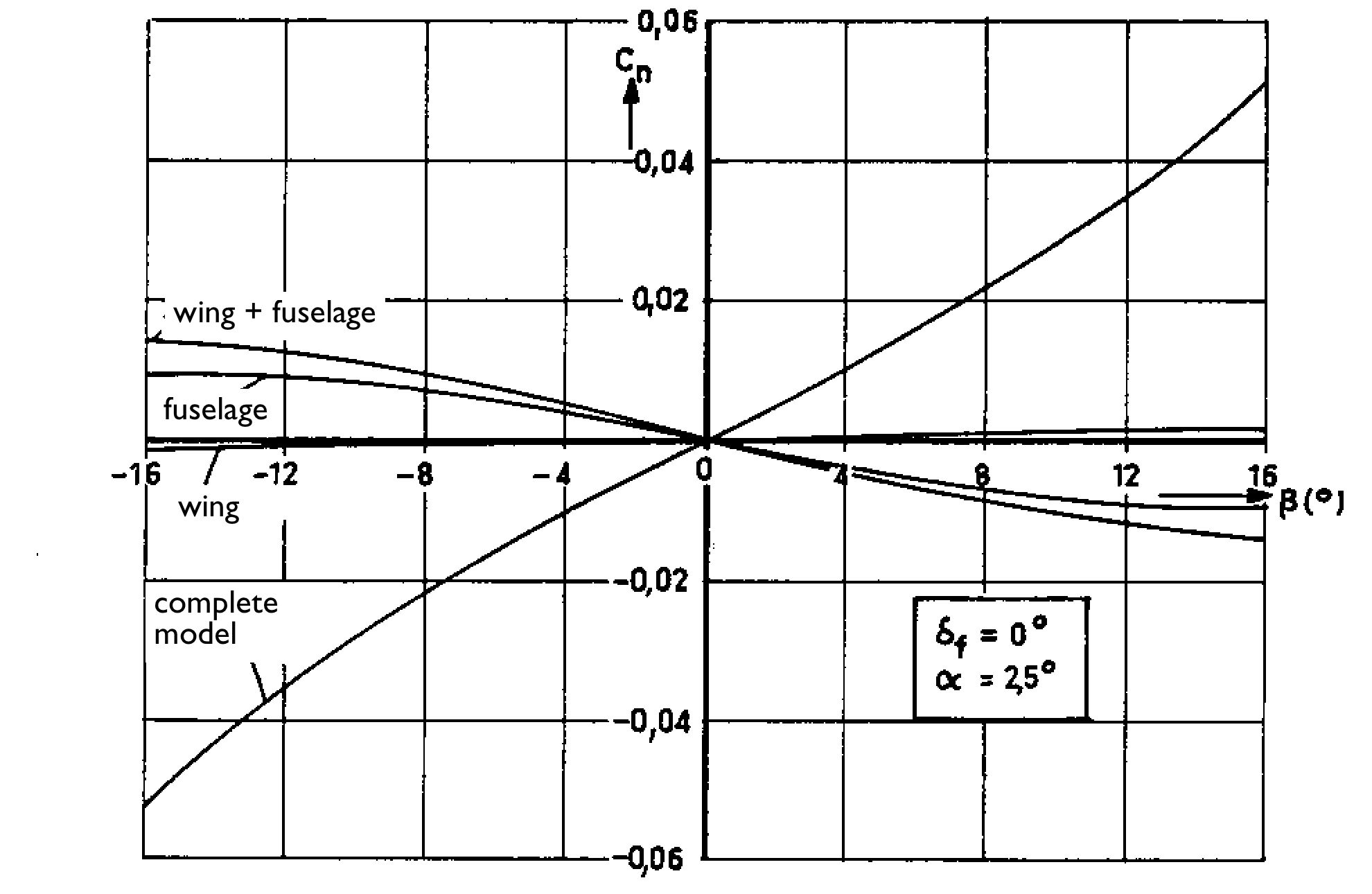Obviously considering that (almost) every plane has a vertical stabilizer, probably not, but for a relatively long aircraft does the fuselage measurably contribute to the yaw stabilization relative to the vertical stabilizer?
2 Answers
This is not a dumb question at all, and the short answer is not at all.
Since the fuselage must be balanced around the center of gravity (cg), part of it will be forward of the cg. This part contributes a destabilizing effect and since the fuselage is a slender object, most of its lift will be produced near the nose. This means that the whole fuselage, even if it is very long, is still destabilizing as a whole.
The center of pressure of a symmetric airfoil in subsonic speed is at its quarter point. This is classical two-dimensional aerodynamics. Once this airfoil is turned into a wing, its aspect ratio (ratio between span and chord) will influence the location of the center of pressure such that it moves forward (towards the leading edge) the smaller the aspect ratio becomes. In the extreme case of very long chord and almost no span, the center of pressure moves into the leading edge. For a fuselage this means that its neutral point is way ahead of its center of gravity.
The vertical stabilizer is closer to a wing and also more effective. The aspect ratio also influences the amount of lift that can be achieved with a given angle of attack (lift curve slope) and for slender bodies the lift curve slope per radian is as low as π/2 times the aspect ratio while for a wing of infinite aspect ratio it is 2π. This is all valid for attached flow, so with larger amounts of sideslip and flow separation on the leeward side things will change and the exposed area will become more important.
The heavy engines and very lightweight structures of early airplanes would allow a very short forward fuselage while the rear fuselage would have a large side area. Still, even those needed a small vertical tail, mostly for control, but also for stabilization. Note that all airships were laterally unstable and required constant attention by the person at the rudder controls to stay on course.
The Nieuport 11 (picture source) should illustrate the point about early airplanes nicely. If you take away the rudder, the fuselage will start to yaw off course until flow separation starts and limits the amount of yaw. However, at this point drag will already be punishingly high, so the rudder helps to keep the fuselage on course.
-
$\begingroup$ A chum from years ago used to fly a Fokker DR-1 that was owned by a little museum. It was a full size replica, powered with a Lycoming O-320 disguised under the round cowling, so without the gyro effects of a rotary, but in any case he said it was pretty much neutral to slightly negative in yaw and would sit wherever you pointed it, and could perform incredible high rate wings-level skidding turns that felt like you were in a centrifuge. He said it was exhausting to fly, but it was easy to see why Von Richtofen liked it, with its seeming ability to point and shoot in almost any direction. $\endgroup$– John KCommented Jun 28, 2021 at 19:58
-
$\begingroup$ @JohnK This flat turning was a trick introduced by Oswald Boelcke in the Fokker E.III. The initial instability together with the fully deflected rudder built up the yaw rate so the plane would continue to spin around even when flying sideways. It was not very effective, though, because the high yaw rate in combination with the low rate of fire of their guns would only be good for scaring their pursuers. $\endgroup$ Commented Jun 28, 2021 at 23:15
-
$\begingroup$ I sometimes feel I need to make a fake account just so that I can give these kind of answers more upvotes. $\endgroup$ Commented Jun 29, 2021 at 2:28
-
$\begingroup$ @KennSebesta Please spare the effort. I have enough reputation already. $\endgroup$ Commented Jun 29, 2021 at 17:47
Yes, the fuselage contributes to yaw stability, as do the wings and in some cases the engine(s). However, the fuselage contributes in a negative way, it is unstabilising.
What percentage the fuselage contributes, depends of course on the shape of the aeroplane. The figure below is from my university book (paper version only) on flight dynamics, by prof. Gerlach, which shows the dimensionless yaw coefficient $C_n$ as a function of side slip angle $\beta$, for a wind tunnel model of the Fokker F27:
The four graphs indicate, from left top to bottom, the $C_n/\beta$ of:
- The wing/fuselage combination.
- The fuselage only.
- The wing only.
- The complete aeroplane model, the only graph showing the desired positive $C_n/\beta derivative$
Notice that the wing/fuselage combination is not a simple addition of wing and fuselage contribution, due to the wing/fuselage interference. The wing only contribution is ever so slightly positive.
For the two graphs with the fuselage, $C_n$ is negative for positive $\beta$, indicating a de-stabilising yaw coefficient as a function of slip angle. For the F27 the contribution of the fuselage/wing is about -30%, the vertical tail is an absolute necessity!
We can see that the straight wings of the F27 contribute very little to slip stability. Contribution to slip stability of the wings depends on the wing dihedral and the wing sweep angles. How the wing sweep angle contributes is intuitively clear from the figure below:
-
1$\begingroup$ Ahem - isn't c$_y$ the side force coefficient? For yaw stability the coefficient to use is c$_{n\beta}$. And I'm quite sure that the F-27 fuselage is destabilizing in yaw, even in Prof. Gerlach's book. $\endgroup$ Commented Jun 29, 2021 at 17:49



